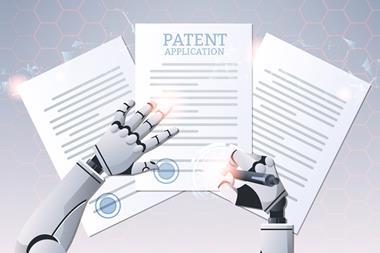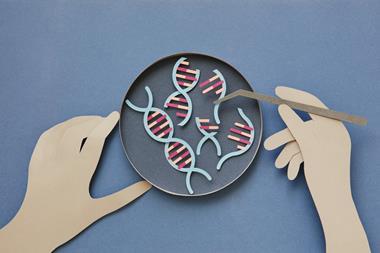The European Patent Office (EPO) has announced that patent applications for gene-edited and gene-modified organisms will continue to be examined under existing rules, despite EU Commission proposals that are expected to introduce separate regulations to cover the commercial applications of these technologies.
The new legislation will create a distinction between crop varieties developed using different ’new genomic techniques’ (NGTs) that allow scientists to alter the genetic material of an organism. In the early stages of this technology, concerns around possible side effects or consequences of these altered genes led to stringent regulatory procedures that many organisations have argued are overly restrictive and unfit for purpose. Under the proposed new rules, gene-edited crops, which contain changes to existing DNA within the organism and, crucially, could be obtained via conventional breeding methods, will face far lighter regulation than genetically modified crops that contain additional genes foreign to the organism. This proposal has been welcomed by many researchers and organisations across the EU who are eager to see Europe brought into line with the other parts of the world.

However, concerns have since been raised that this regulatory update will not address the associated intellectual property issues surrounding this technology. In a Q&A accompanying the press release, the EU Commission stated that ‘the legislative proposal concerns the release and placing on the market of NGT plants but does not regulate issues of intellectual property’. This apparent omission has caused ripples of uncertainty throughout the media but industry professionals insist that these regulatory changes are entirely separate to the intellectual property framework. ‘It’s business as usual for us. What’s relevant from an intellectual property perspective is whether there is a technical invention or not,’ explains Claire Irvine, a patent attorney at European IP firm HGF. ‘Gene-edited and gene-modified plants both use a technology so that’s patentable as a new invention. Whereas variants which are either completely natural or selectively bred are not using a technology so they’re excluded. Whether or not the EU is happy for gene-edited crops to be consumed and grown is irrelevant to that.’
Intellectual property protection is an established part of the agricultural industry and the sector applies two complementary systems to support both innovation and access throughout the supply chain. ‘Plant variety protection (PVP) covers a conventionally bred variety as a whole [and] offers the original breeder the exclusive right to commercialise [their] variety. At the same time, it is permitted to use commercially available varieties for the development of new varieties under the breeders’ exemption,’ explains a spokesperson for KWS, a global plant breeding company based in Germany. ‘Patent protection covers technical inventions [which], in the case of plants, are mainly specific plant characteristics … developed [for example] by NGTs. These traits can be crossed into many varieties, conferring the desired trait into all of them [and] include drought or cold tolerance [and] fungal and pest resistance.’
Farmers and independent breeders may still access protected plant traits through industry-wide licencing platforms that allow them to grow, propagate and naturally breed protected crops, and only prevent the commercialisation of varieties developed from the original protected seed. This existing framework is generally supported by stakeholders across the sector and agricultural trade union CropLife Europe says that this regulation balances the needs of innovating large companies with those of individual farmers. ‘Research in the plant sciences is very costly and that is why a balanced and effective intellectual property framework is needed. This encourages innovation as developers know that their effort and investment can be protected,’ comments a spokesperson for the union. ‘Patents are enabling the innovative traits that farmers need, and through these licencing initiatives, these will become available to farmers.’
Technical vs biological
At the heart of the uncertainty surrounding intellectual property is a debate around what counts as a ‘technical invention’ and therefore a patentable product, and what counts as ‘essentially biological‘ and is excluded from patentability according to a 2017 EU Commission directive. According to Irvine, this is ‘still an area of discussion’.
‘When people talk about NGTs they generally mean Crispr–Cas technology but there are other less sophisticated technical approaches such as UV mutagenesis coupled with selection – that’s not strictly an essentially biological process but opponents to patent protection see it as not sufficiently technical to patent,’ says Irvine. ‘The EPO may need to be more precise about what they mean by “technical invention” and “essentially biological”.’
CropLife Europe also believes that confirmation of the limits and exclusions surrounding this technology in relation to plant breeding would be beneficial to the sector as a whole, giving confidence to innovators around what they can protect and offering clarity to farmers for how they can access different plant varieties. ‘[We] believe that additional measures can help address the existing concerns [by] clarifying the patentability criteria – novelty, inventive step, sufficiency, clarity – for plants obtained by technical processes,’ says a CropLife Europe spokesperson. ‘In this respect, CropLife Europe members support an improved application of the patentability criteria to plant-related inventions to ensure that only high-quality patents are granted.’
The EU Commission will monitor the industry as these regulatory changes take effect and will continue to evaluate their impacts until 2026 to ensure no stakeholders are disproportionately affected. Irvine doubts these changes will have any influence on the way companies approach filing and challenging patents for new plant technologies and industry players remain confident that the existing intellectual property framework will cope with the potential influx of new plant patent applications. ‘The EPO is acting in accordance with applicable European patent laws,’ comments the KWS spokesperson. ‘We are confident that the European Commission will come to similar conclusions as KWS – acknowledging that a fair balance of PVP and patents meets the needs of innovation and access in plant breeding in the best and most efficient way.’

















No comments yet